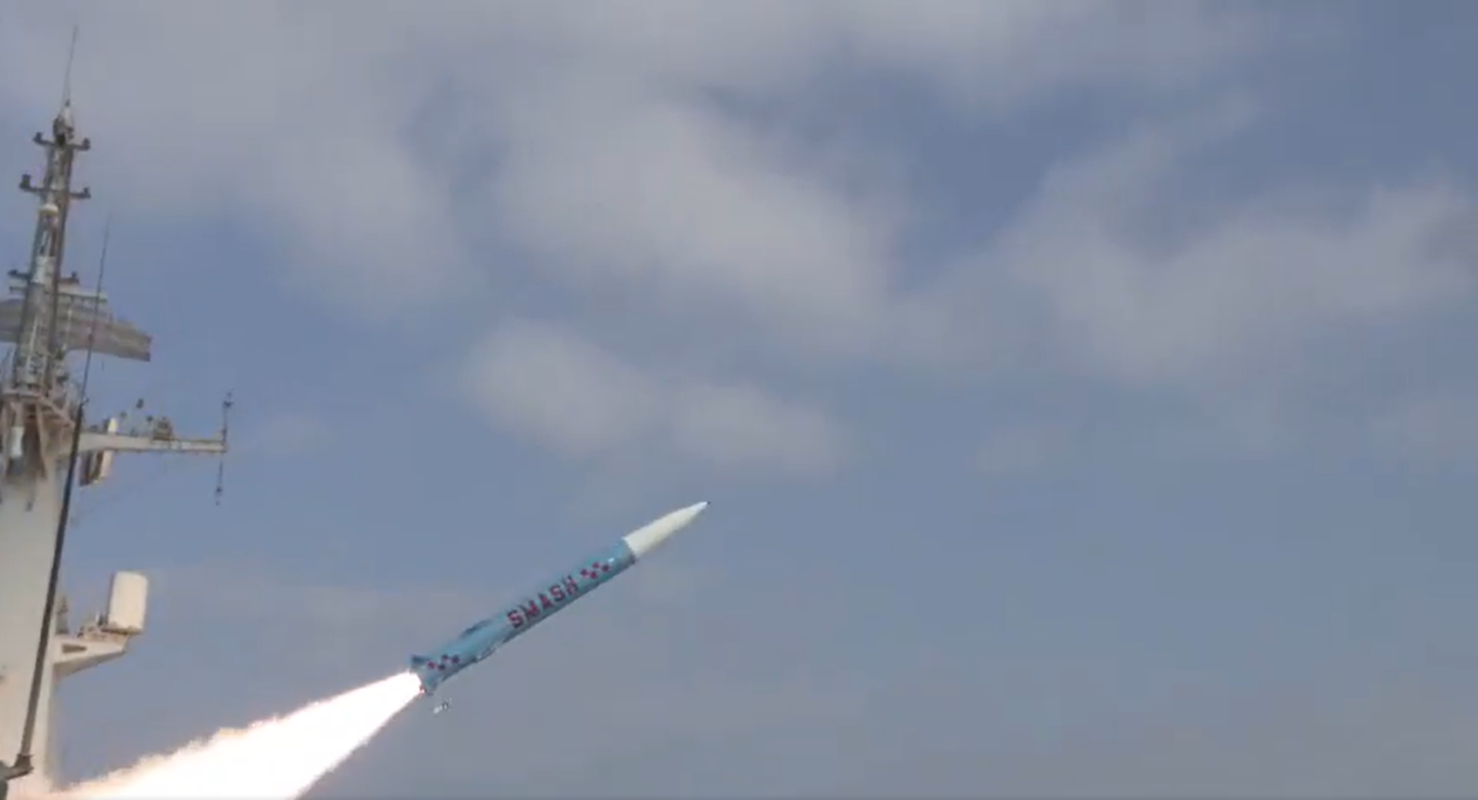AFI
SOURCE: AFI


On April 27, 2025, reports surfaced on social media platforms, including posts on X, alleging that the Pakistan Army has deployed Chinese-origin SH-15 truck-mounted 155mm/52-caliber artillery systems in populated areas of Lahore, raising concerns about potential military strategies and their implications for regional security. These advanced howitzers, capable of striking targets up to 53 kilometers away with rocket-assisted projectiles (RAP), could theoretically reach the Indian city of Amritsar, located approximately 50 kilometers from Lahore.
Speculation suggests that Pakistan may be adopting tactics observed in the Ukraine conflict, concealing heavy weaponry within civilian areas to complicate targeting and response. This development has sparked debate about Pakistan’s military intentions, the role of Chinese defense technology, and the risks of escalating tensions along the India-Pakistan border.
Continue readingSOURCE: AFI


A video circulating widely on social media, particularly noted on X on April 27, 2025, features an alleged Pakistani Air Force (PAF) pilot claiming that the PAF shot down 21 Indian Air Force (IAF) fighter jets during a single operation. While the video is undated, its context and the pilot’s uniform suggest it may have been recorded shortly after Operation Swift Retort, the PAF’s retaliatory airstrikes on February 27, 2019, following India’s Balakot airstrike.
The exaggerated claim, unsupported by historical evidence, has reignited debates about the PAF’s reliance on propaganda, its pursuit of personal glory, and its limited role in supporting Pakistani Army ground operations. This article examines the video’s implications, the reality of Operation Swift Retort, and the broader strategic motivations behind such claims.
Continue readingSOURCE: AFI


In the complex and volatile India-Pakistan strategic landscape, Pakistan’s development of tactical nuclear weapons (TNWs) has raised concerns about their potential use in a future conflict. Specifically, speculation has emerged that Pakistan could deploy TNWs to target high-value Indian naval assets, such as aircraft carriers, given the Indian Navy’s robust defenses against conventional threats like subsonic cruise missiles. This article examines the plausibility, implications, and strategic dynamics of such a scenario, focusing on the Indian Navy’s aircraft carriers and their defenses, notably the Medium-Range Surface-to-Air Missile (MR-SAM) system.
India’s aircraft carriers, including the INS Vikramaditya and the indigenously built INS Vikrant, are linchpins of the Indian Navy’s power projection in the Indian Ocean Region (IOR). These carriers, costing billions of dollars, are critical for maintaining maritime dominance, securing sea lines of communication, and projecting air power far from Indian shores. In a potential conflict with Pakistan, they would play a pivotal role in enforcing blockades, conducting strikes, and countering Pakistan’s naval and air assets.
Continue readingSOURCE: AFI


In the volatile South Asian geopolitical landscape, India and Pakistan maintain robust air defense systems to counter aerial threats, reflecting their ongoing rivalry and mutual deterrence strategies. A comparative analysis of their air defense systems, as detailed in a recent infographic shared on X, reveals stark contrasts in range, radar technology, and target engagement capabilities.
With India’s layered, multi-tiered defenses contrasting against Pakistan’s more limited but evolving systems.
Continue readingSOURCE: AFI


On April 28, 2025, a Lockheed C-130 Hercules belonging to the Turkish Air Force was tracked flying over the Arabian Sea, as reported by the flight tracking service ADS-B Exchange. The aircraft, bearing the registration number 68-01606 and operating under the call sign TUAF509, was detected at 14:20:11Z (UTC) with a squawk code of 4701.
The flight’s unusual route, which appeared to be heading toward Karachi, Pakistan, has sparked widespread curiosity about its purpose and Turkey’s military activities in the region. Open-source intelligence (OSINT) analysis and flight tracking data have fueled speculation that the aircraft may be involved in an urgent transfer of ammunition for Pakistan’s unmanned aerial vehicle (UAV) fleet.
Continue readingSOURCE: AFI


The United Nations Military Observer Group in India and Pakistan (UNMOGIP), established in 1949 to monitor the ceasefire line in Jammu and Kashmir, has long outlived its relevance. With its main office in Srinagar, the UNMOGIP has been a vestige of a bygone era, rooted in a context that no longer aligns with the region’s geopolitical realities.
As India asserts its sovereignty over Jammu and Kashmir, particularly following the revocation of Article 370 in 2019, it is time for the government to decisively close the UNMOGIP office in Srinagar. This move would reaffirm India’s stance that Jammu and Kashmir is an integral part of the nation and signal an end to outdated international oversight.
Continue readingSOURCE: AFI


The evolving maritime security landscape in the Indian Ocean Region (IOR) demands that the Indian Navy maintain a decisive edge over potential adversaries, including the Pakistan Navy. With the Pakistan Navy modernizing its fleet and acquiring advanced submarines and surface combatants, India must leverage its technological and strategic advantages to ensure maritime dominance. One potent option is arming the Indian Navy’s Boeing P-8I Neptune maritime patrol aircraft with the Rudram-II anti-ship missile variant, a move that could significantly enhance its offensive capabilities and deterrence posture.
The Pakistan Navy, though smaller than its Indian counterpart, has been steadily enhancing its capabilities. With Chinese assistance, it has inducted advanced platforms like the Type 054A/P frigates and Yuan-class submarines equipped with anti-ship cruise missiles (ASCMs) and torpedoes. These assets, combined with Pakistan’s focus on sea denial strategies, pose a credible threat to Indian naval operations, particularly in the Arabian Sea. The Pakistan Navy’s ability to deploy submarines and surface combatants in choke points like the Gulf of Oman or near the Makran coast underscores the need for India to maintain long-range, precision strike capabilities.
Continue readingSOURCE: AFI

In a provocative escalation of tensions between India and Pakistan, Federal Minister for Railways Muhammad Hanif Abbasi has issued a stark warning, claiming that Pakistan possesses 130 nuclear warheads strategically dispersed across the country, ready to be deployed in the event of an Indian attack. Speaking at a press conference at his residence in Rawalpindi on April 26, 2025, Abbasi further asserted that Pakistan’s missile arsenal, including the Ghori, Shaheen, and Ghaznavi missiles, is exclusively targeted at India, signaling a readiness for “full-scale war” if provoked.
This inflammatory rhetoric comes in the wake of India’s suspension of the Indus Waters Treaty following the deadly Pahalgam terror attack on April 22, which killed 26 people, intensifying the already volatile India-Pakistan relationship.
Continue readingSOURCE: AFI


The February 27, 2019, air skirmish between the Indian Air Force (IAF) and the Pakistan Air Force (PAF) over the Line of Control (LoC) in Jammu and Kashmir exposed critical gaps in India’s air-to-air missile capabilities. The engagement, part of the tit-for-tat escalation following India’s Balakot airstrike, saw Pakistan’s F-16 fighters, armed with U.S.-supplied AIM-120C-5 Advanced Medium-Range Air-to-Air Missiles (AMRAAMs), outrange and outmaneuver Indian jets, notably the Sukhoi Su-30 MKIs equipped with Russian R-77 missiles.
This incident, which resulted in the downing of an Indian MiG-21 and the capture of Wing Commander Abhinandan Varthaman, prompted the IAF to prioritize the induction and expansion of its indigenous Astra Mk-1 beyond-visual-range (BVR) missile to counter the PAF’s F-16 fleet and its AMRAAMs. Since 2019, the IAF has significantly beefed up its Astra Mk-1 arsenal, enhancing its air combat capabilities and reducing reliance on foreign suppliers.
Continue readingSOURCE: AFI


In a transformative development for India’s defence manufacturing sector, SM Pulp Packaging, now rebranded as SMPP Ammunition, is establishing a sprawling 300-hectare munitions manufacturing facility in Solan, Himachal Pradesh. This ambitious project, quietly backed by the Rheinmetall Denel group, marks a significant step toward bolstering India’s self-reliance in defence production.
The facility, located at Plot No. 01, Industrial Area, Lakhanpur, Tehsil Nalagarh, Distt. Solan, spans approximately 3,237,600 square meters (800 acres) of industrial land allotted on a 95-year lease by the Government of Himachal Pradesh. The allotment, formalized through a lease deed dated March 1, 2024, and an allotment letter dated January 18, 2022, from the Deputy Director of Industries, Single Window Clearance Agency, Nalagarh, positions SMPP Ammunition to drive large-scale ammunition production for military applications.
Continue readingSOURCE: AFI


In a significant step toward bolstering India’s human spaceflight ambitions, the Indian Space Research Organisation (ISRO), under the Department of Space (DoS), has signed a Framework Memorandum of Understanding (MoU) with the Sree Chitra Tirunal Institute for Medical Sciences and Technology (SCTIMST), Department of Science and Technology (DST), to advance research and innovation in space medicine. The agreement, formalized on April 25, 2025, aims to enhance the capabilities of ISRO’s flagship Gaganyaan mission and future human space exploration initiatives, including the Bharatiya Antariksh Station (Indian Space Station).
The MoU establishes a collaborative framework to drive progress in critical areas of space medicine, including human physiological and behavioral health studies, biomedical support systems, radiation biology and medicine, countermeasures for improving health and performance in space, telemedicine, communication protocols, and the development of crew medical kits for space missions. This partnership is poised to strengthen India’s capacity to ensure astronaut health and performance in the extreme environment of outer space, a prerequisite for successful long-duration missions.
Continue readingSOURCE: AFI


Indian Army released a Request for Information (RFI) for the procurement of Counter-Unmanned Aerial Systems (C-UAS) to be integrated onto its BMP-2/2K Infantry Combat Vehicles (ICVs), with a planned supply of 100 units per year. This initiative, aligned with the Make in India program, aims to enhance the Army’s mechanized infantry capabilities by equipping its aging but critical BMP-2/2K fleet with advanced anti-drone technology.
The move reflects India’s growing focus on countering unmanned aerial threats, particularly along its volatile borders with Pakistan and China, where drones have emerged as a significant challenge. This article explores the RFI’s objectives, the strategic context, and the implications for India’s defense modernization.
Continue readingSOURCE: AFI


On April 26, 2025, the Pakistan Air Force (PAF) released images showcasing its JF-17 Block III fighter jet equipped with PL-15 missiles, sparking widespread discussion on social media platforms like X. The PAF’s announcement, coming amid heightened tensions with India following the Pahalgam attack on April 22, 2025, appears to be a strategic move to project enhanced aerial capabilities. However, a deeper analysis reveals that this claim may be more of a “jumla”—a hollow boast—than a genuine leap in operational strength.
The PAF likely acquired only the export variant, PL-15E, which is supplied with the J-10CE fighter jets and has significant limitations when integrated with the JF-17 Block III.
Continue readingSOURCE: AFI


On April 26, 2025, reports emerged that the Pakistani Navy is planning to conduct a missile test near India’s Special Economic Zone (SEZ) off the Gujarat coast, a strategically sensitive area in the Arabian Sea. This development follows Pakistan’s recent test of the SMASH ship-launched ballistic missile (SLBM) in November 2024, which raised concerns about its anti-access/area-denial (A2/AD) capabilities.
With the Indian Navy deployed near the SEZ to safeguard maritime interests, the question arises: if the test involves a subsonic cruise missile or a ship-launched ballistic missile like SMASH, should the Indian Navy shoot it down? This article examines the strategic context, the nature of the potential missile threat, and the implications of an Indian response, amidst escalating tensions following the Pahalgam attack on April 22, 2025.
Continue readingSOURCE: AFI


Recent reports of GPS jamming along the Indo-Pak border, particularly in the Jammu and Kashmir region, indicate that both India and Pakistan have deployed electronic warfare (EW) units, marking a significant escalation in their ongoing tensions. The jamming, affecting areas near the Line of Control (LoC) as depicted in a map shared on X, disrupts satellite navigation signals critical for military operations, civilian aviation, and communication systems.
With India possessing more sophisticated and numerous EW units compared to Pakistan, this development underscores the growing seriousness of the situation, especially following the Pahalgam attack on April 22, 2025, and India’s consideration of scrapping the 2021 LoC ceasefire. This article examines the implications of GPS jamming, the comparative EW capabilities of both nations, and the broader strategic context.
Continue reading